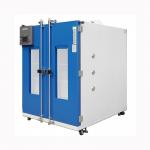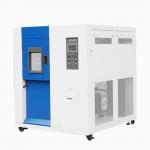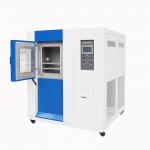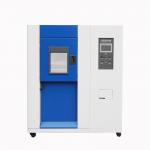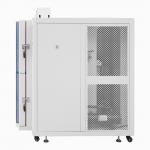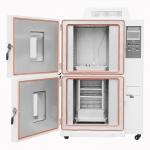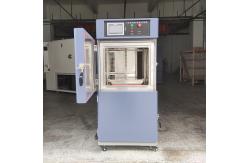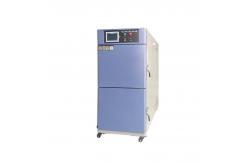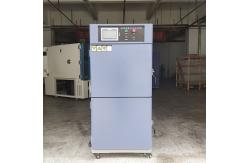In the realm of electronics and industrial manufacturing, the need
for components to withstand harsh environmental conditions is of
paramount importance. The Custom Thermal Shock Chambers, designed
to meet the IEC-60068-2-14, Test Na² test standards, emerge as a
crucial asset in evaluating and enhancing the durability of a wide
range of products. This custom-built thermal shock chamber is dedicated to subjecting
components and products to the specific thermal shock testing
requirements outlined in the IEC-60068-2-14, Test Na² standard. It
serves industries such as automotive, aerospace,
telecommunications, and consumer electronics. The primary goal is
to assess the ability of components like circuit boards,
connectors, sensors, and housings to endure rapid and extreme
temperature fluctuations. By replicating the thermal shock
scenarios that these components may encounter during their
operational lifetimes, manufacturers can identify potential
weaknesses, optimize design and manufacturing processes, and ensure
the reliability and performance of their products in diverse and
challenging environments. - Robust and Insulated Chamber Structure
- The chamber is constructed with heavy-duty, heat-resistant
materials that can withstand the intense thermal stresses. The
walls are made of high-strength steel alloy, combined with advanced
thermal insulation layers to minimize heat transfer between the hot
and cold zones. The door is engineered with a reliable sealing
mechanism and a viewing window, allowing operators to monitor the
testing process without compromising the chamber's integrity. The
interior is designed with adjustable racks and fixtures, enabling
the accommodation of variously sized and shaped components and
ensuring uniform exposure to the thermal shock conditions.
- Precision Temperature Control System
- Temperature Range and Cycling: Capable of achieving a wide
temperature range, typically from -60°C to +150°C. The system can
execute rapid temperature cycling between the hot and cold zones,
with a transition time as short as a few seconds. This is essential
for mimicking the abrupt temperature changes that components may
experience in real-world applications, such as when a device is
powered on or off, or when exposed to external heat sources. The
temperature control is accurate to within ±0.3°C, providing
reliable and repeatable test results.
- Intuitive Control Panel and Data Acquisition Interface
- The control panel is designed for user-friendliness, allowing
operators to easily set and adjust test parameters such as
temperature levels, dwell times in each zone, and the number of
thermal shock cycles. It provides real-time displays of the current
temperature in both zones, the status of the testing process, and
any alarms or warnings. The chamber is integrated with a
comprehensive data acquisition system that records all relevant
test data. This includes temperature histories, cycle times, and
any observable changes in the physical, electrical, or mechanical
properties of the components. The data can be stored in a built-in
memory or exported to external storage devices for further
analysis. The system can also generate detailed test reports in
various formats.
- Safety Features and Alarms
- To ensure the safety of operators and the protection of the test
samples and the chamber itself, a range of safety features is
incorporated. These include over-temperature and over-current
protection systems, emergency stop buttons, and alarms for abnormal
temperature fluctuations, equipment malfunctions, or any other
safety-related issues. The chamber is also equipped with proper
ventilation and exhaust systems to handle any potentially harmful
gases or vapors that may be generated during the testing process.
- Temperature Range and Accuracy
- The -60°C to +150°C temperature range with ±0.3°C accuracy offers a
comprehensive testing spectrum. Different components have different
temperature tolerances and performance characteristics. For
example, electronic components may experience changes in electrical
conductivity or mechanical stress at extreme temperatures. The
accurate temperature control ensures that the test conditions are
precisely maintained, allowing for a detailed assessment of
component behavior.
- Thermal Shock Cycle Parameters
- The chamber can be programmed to perform a specific number of
thermal shock cycles, typically ranging from 10 to 500, depending
on the requirements of the IEC-60068-2-14, Test Na² standard and
the nature of the components. The dwell time in each temperature
zone can also be adjusted, from a few minutes to several hours.
This flexibility enables manufacturers to simulate a wide variety
of real-world scenarios and evaluate the long-term durability of
components under different thermal shock conditions.
- Testing Volume and Payload Capacity
|
